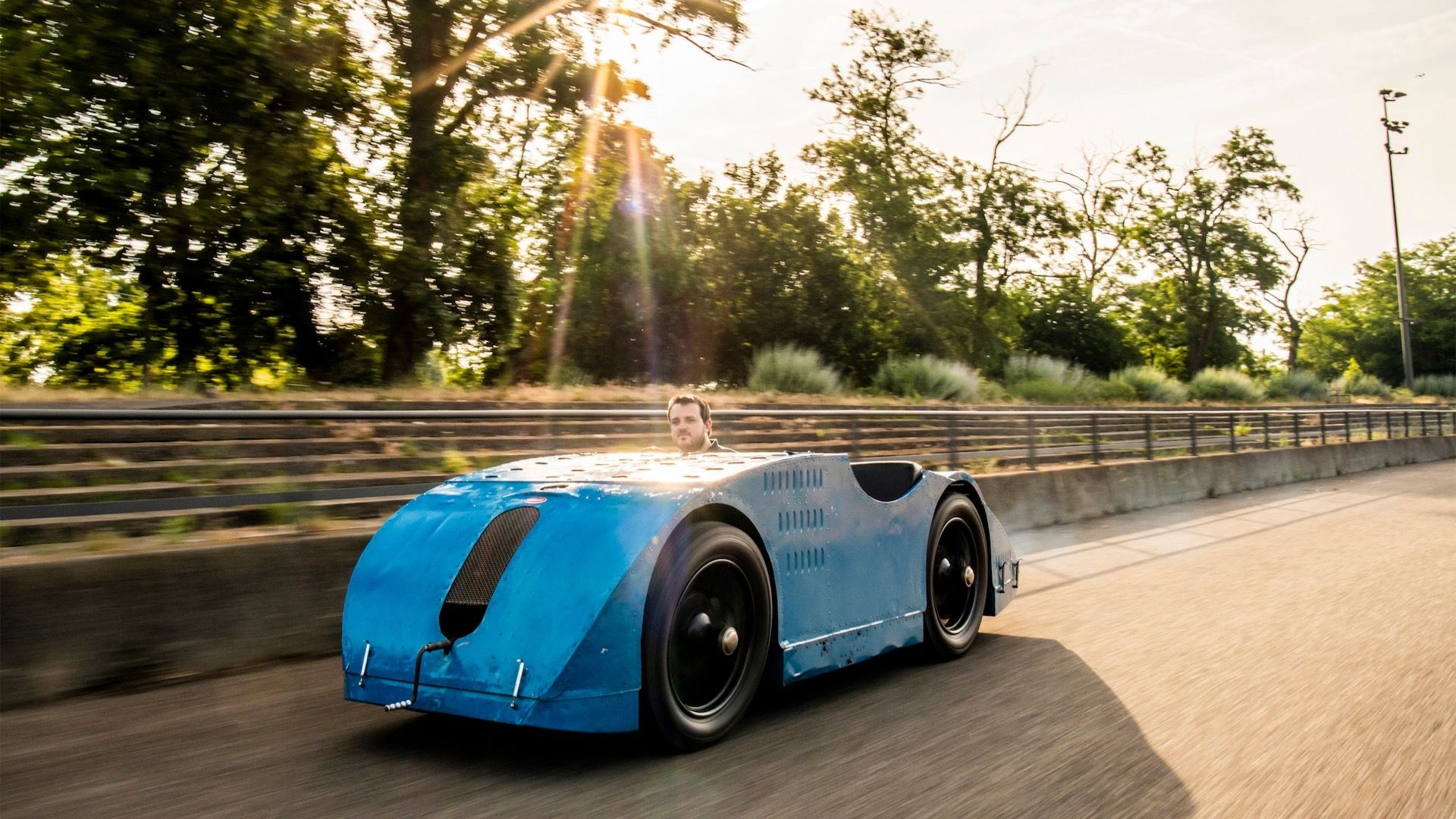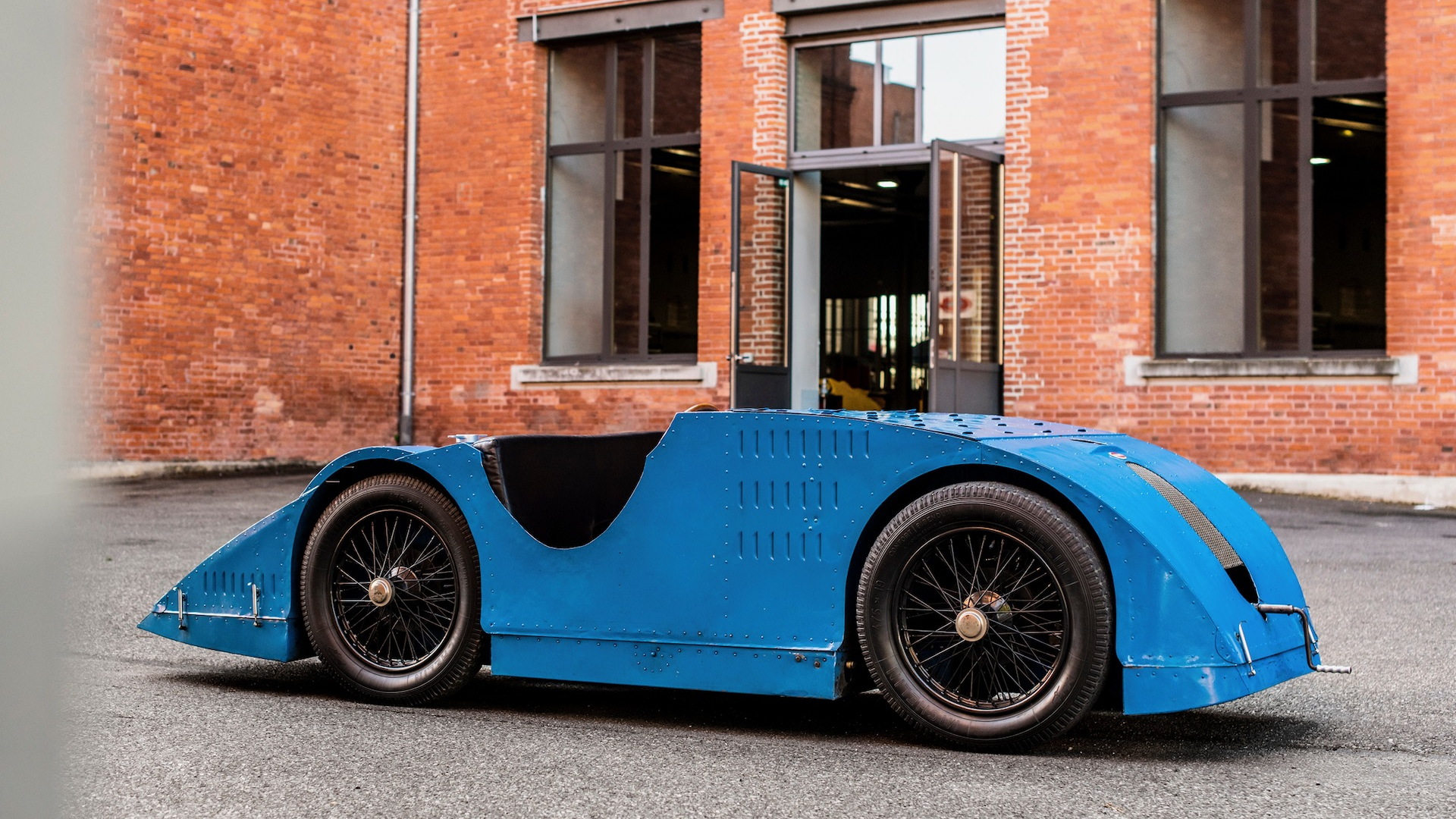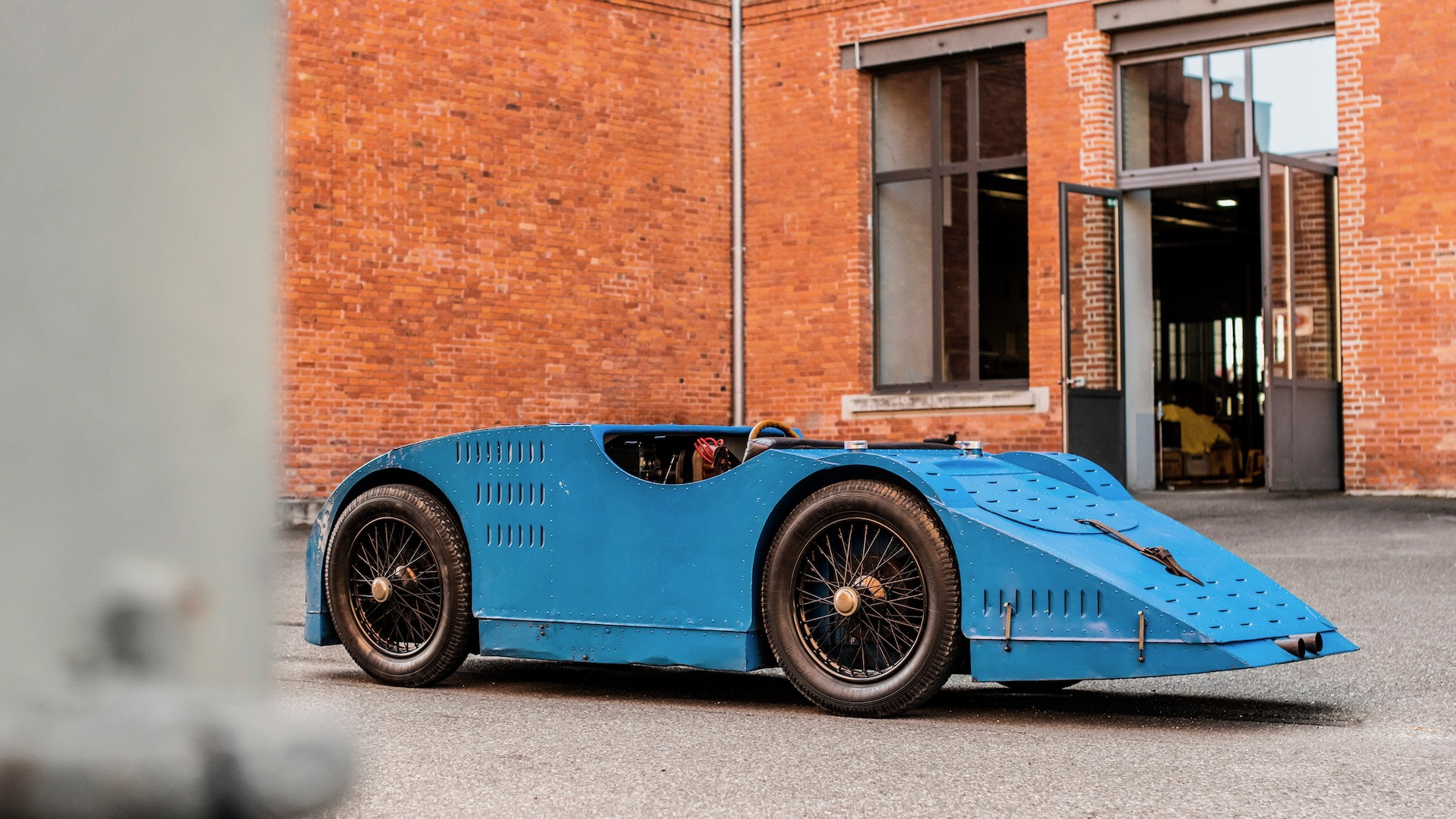Bugatti is celebrating the 100th anniversary of the Type 32 "Tank," one of the most distinctive race cars from the automaker's golden age.
The Tank got its name from its unusual shape, which contrasted the lithe appearance of other prewar Bugatti cars, as well as its exposed rivets and bolts. While it was nicknamed for plodding tracked military vehicles, the Tank's design was inspired by airplane wings, and intended to improve aerodynamic performance, according to Bugatti.
Bugatti used the Type 30 as a starting point, incorporating that car's 2.0-liter inline-8 engine, which produced around 88 hp and drove the rear wheels through a 3-speed manual transmission. But the wheelbase was shortened and the track narrowed to accommodate the new body shape.
Aside from the styling, the Tank had some mechanical features that were considered innovative in the day, including an underslung chassis and front hydraulic brakes. Four production cars were built, plus a prototype.

Bugatti Type 32
The Tank made its racing debut on July 2, 1923, at the French Grand Prix, which was held in the city of Tours in the Loire Valley that year. Bugatti entered all four production cars in the race, which consisted of 35 laps around a 14.1-mile circuit comprised of public roads. The best finish by a Tank driver was by Frenchman Ernest Friderich, who placed third. He completed the race in seven hours and 22.4 seconds, with an average speed of just under 70 mph.
The 1923 French Grand Prix was the Type 32's only race, as Bugatti quickly shifted focus to development of the Type 35. However, the Tank nickname would live on with the Bugatti Type 57G, which won the 1937 24 Hours of Le Mans, as well as the 1936 French Grand Prix.





